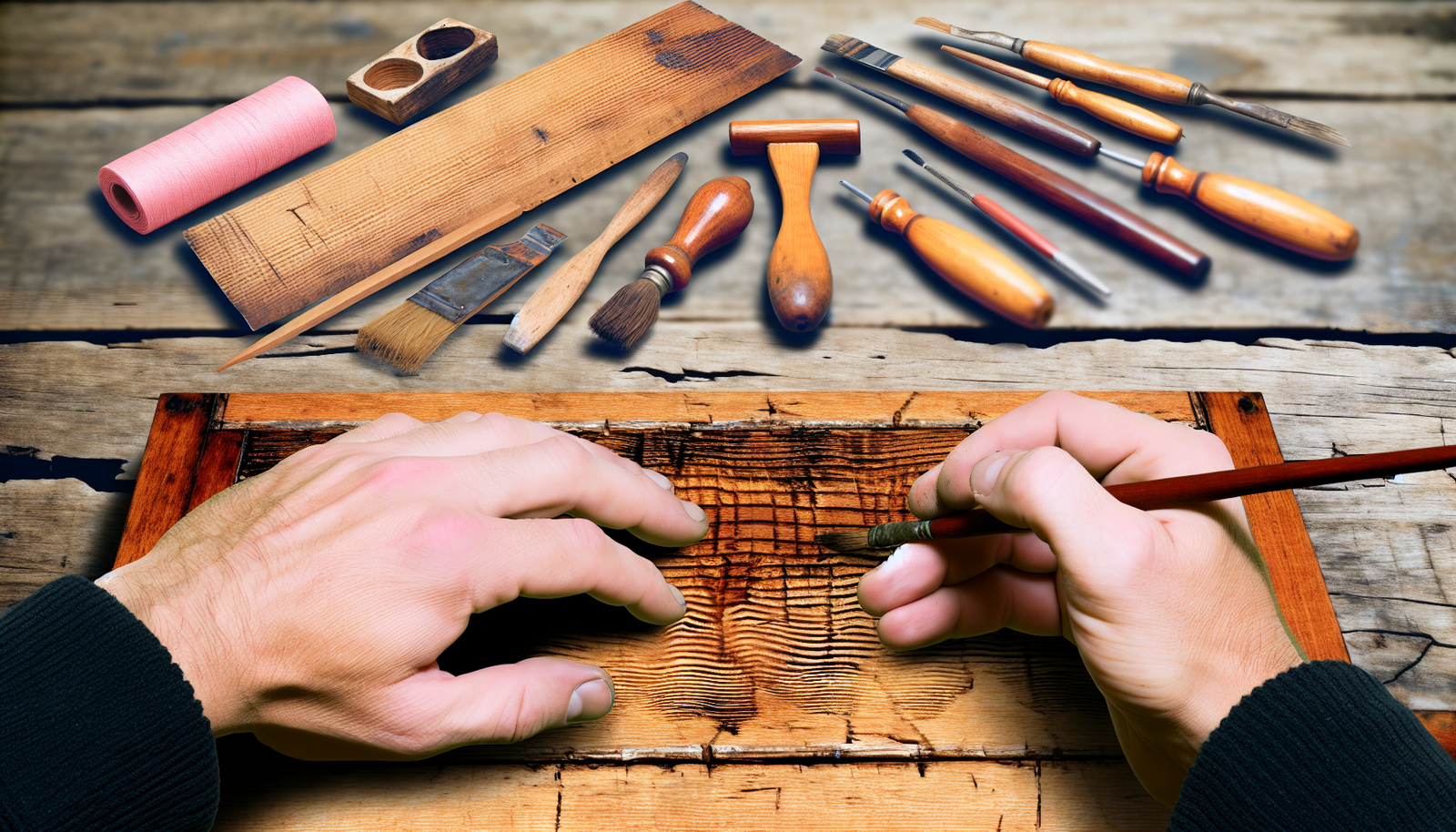Table of Contents
Scratched Wood Tables can detract from the elegance of your home. Whether it’s a minor scuff or a deep gouge, understanding how to effectively address these blemishes is essential for maintaining the aesthetic and durability of your furniture. This comprehensive guide provides detailed solutions for repairing Scratched Wood Tables, helping you restore their beauty and ensure they look as good as new.
Understanding Wood Finishing
Wood finishing plays a vital role in both the preservation and restoration of Scratched Wood Tables, serving as the first line of defense against daily wear, abrasions, and environmental damage. A proper finish is more than a decorative touch—it forms a durable barrier that protects wood fibers from moisture, dust, and microbial growth.
For Scratched Wood Tables, the depth and visibility of scratches depend largely on the type and quality of finish applied. A strong, well-maintained finish confines damage to the surface layer, making repairs easier while preserving structural integrity and long-term beauty.
There are several types of wood finishes, each offering different levels of protection and visual appeal. Varnishes and polyurethanes create a hard, clear shell that delivers superior defense against water, heat, and impacts. Shellac and lacquer finishes add gloss and elegance but are more susceptible to wear and chemicals.
Finishes not only enhance aesthetics but also seal pores to prevent swelling, warping, and rot. They make Scratched Wood Tables easier to clean, maintain hygiene, and minimize bacterial buildup. Choosing the right finish—or repairing an existing one—extends the lifespan of your wooden table and determines the best method for fixing scratches. Understanding your finish helps you identify the depth of the damage and choose the most effective restoration approach.
Identifying Types of Scratches on Scratched Wood Tables
Before repairing Scratched Wood Tables, you must accurately assess the type of scratch. Each category requires a different technique, depending on its depth and severity.
Superficial scratches appear as light, whitish lines confined to the finish layer. They don’t affect the wood beneath and can usually be treated with blending markers, wax sticks, or simple home remedies.
Moderate scratches break through the finish and slightly expose the wood. These require minor filling or sanding before refinishing.
Deep scratches or gouges expose raw wood fibers and may require professional attention—especially for antique or high-value Scratched Wood Tables.
Carefully observing the scratch’s depth and texture ensures that the chosen repair method is effective and long-lasting.
Preparing Scratched Wood Tables for Repair
Preparation is key to successfully restoring Scratched Wood Tables. Choose a clean, well-lit workspace and start by clearing the surface of all items. Use a soft microfiber cloth to remove dust, wiping along the wood grain to avoid adding micro-scratches.
Next, remove old wax or polish residue using a mild cleaning solution—mixing warm water with a few drops of dish soap works well. Avoid soaking the surface, as excess moisture can harm the wood. For stubborn residues, use a small amount of mineral spirits and test in an inconspicuous spot first.
Allow the table to dry completely before repair. Gather your tools—soft cloths, fine sandpaper, stain markers, wood fillers, and gloves—to ensure a smooth workflow. Proper preparation guarantees a strong, lasting result.
Step-by-Step Scratch Repair Techniques
1. Minor Surface Scratches – Natural Solutions
For light scratches on Scratched Wood Tables, natural oils can offer quick fixes. Rub a shelled walnut or pecan along the scratch to let its oils blend the mark with surrounding wood. Alternatively, mix equal parts baking soda and olive oil, gently rub the paste in, and buff for a subtle improvement.
2. Moderate Scratches – Blending and Filling
Use a wood stain marker or blending stick matching your table’s color. Trace over the scratch, let it absorb, and wipe away excess. For deeper lines, use a wax filler stick—rub it into the groove, smooth it with a card edge, and buff. This technique restores uniform color and texture to Scratched Wood Tables.
3. Deep Scratches – Commercial Repair Kits
For severe damage, commercial repair kits designed for Scratched Wood Tables provide professional-grade results. These kits include blending markers, resin fillers, and polishing compounds. Follow manufacturer instructions for filling, sanding, and polishing to achieve a consistent finish that conceals even deep gouges.
Choose your method based on scratch depth, finish type, and desired outcome.
Preventing Future Damage to Scratched Wood Tables
The best way to maintain Scratched Wood Tables is through consistent care and preventive habits. Avoid placing tables in high-traffic zones where they may be bumped or scratched. Use rugs, mats, and felt pads under furniture legs to reduce friction.
Always use coasters under beverages—moisture rings can weaken finishes and make wood more vulnerable. Placemats, soft tablecloths, and felt-bottomed décor items can further protect your tabletop.
Regular maintenance helps preserve beauty and structure. Dust frequently with a soft cloth, clean spills immediately, and occasionally apply a wood conditioner to nourish the finish. Periodic refinishing adds a fresh protective layer, keeping Scratched Wood Tables resilient for years.
Conclusion
Understanding the nuances of wood finishing, repair techniques, and preventive care ensures that Scratched Wood Tables remain beautiful and functional. By accurately assessing scratches, preparing surfaces properly, and applying the right repair methods, you can restore your table’s elegance with ease. With routine maintenance and mindful protection, Scratched Wood Tables can retain their timeless appeal and continue serving as a centerpiece in your home for years to come.olk


